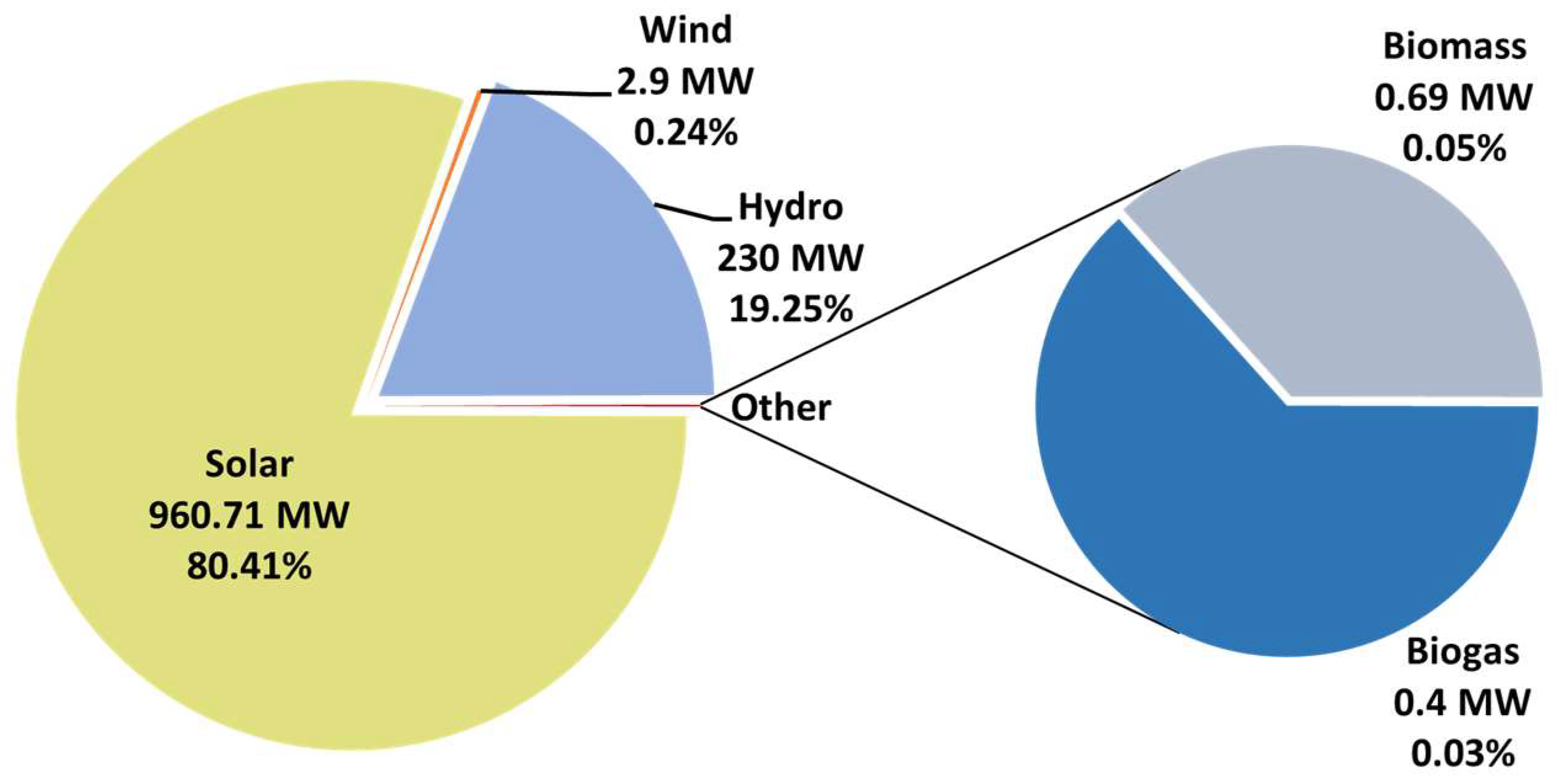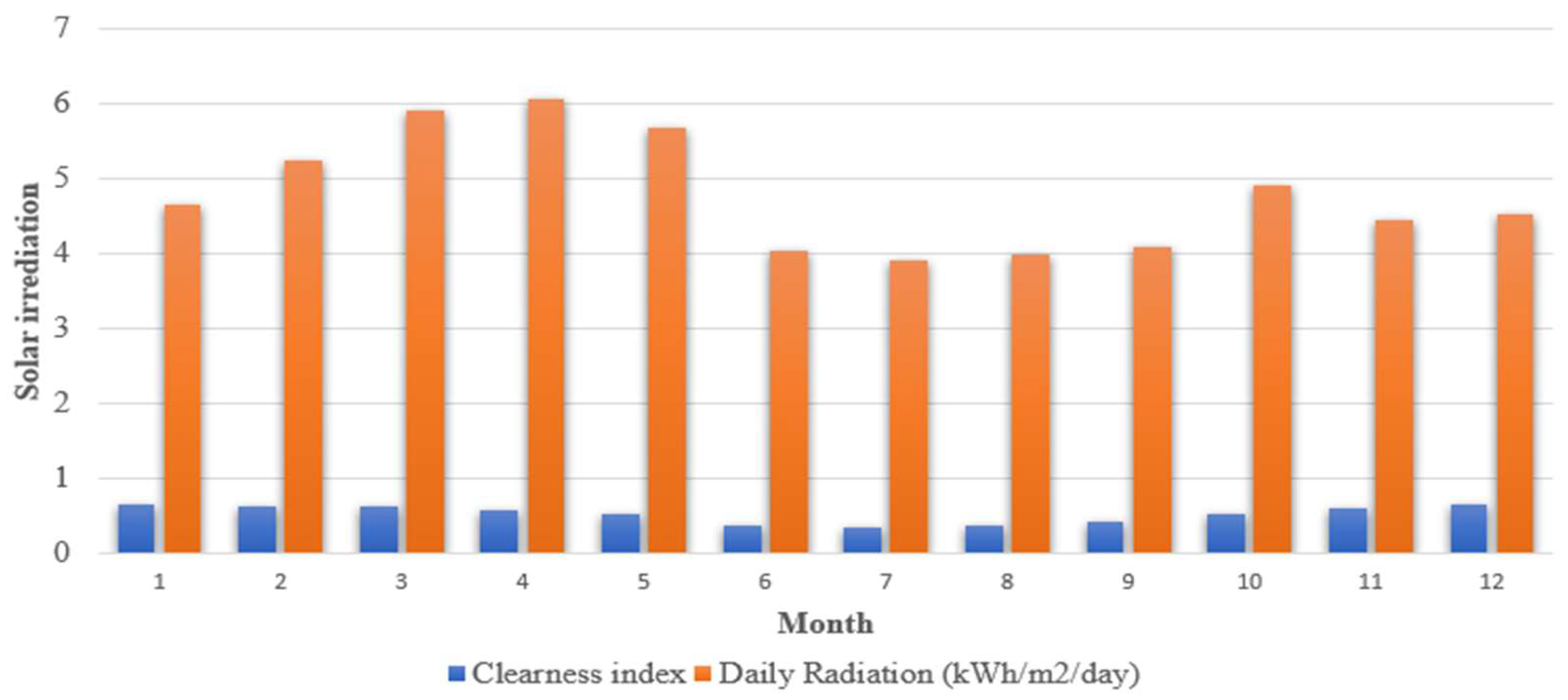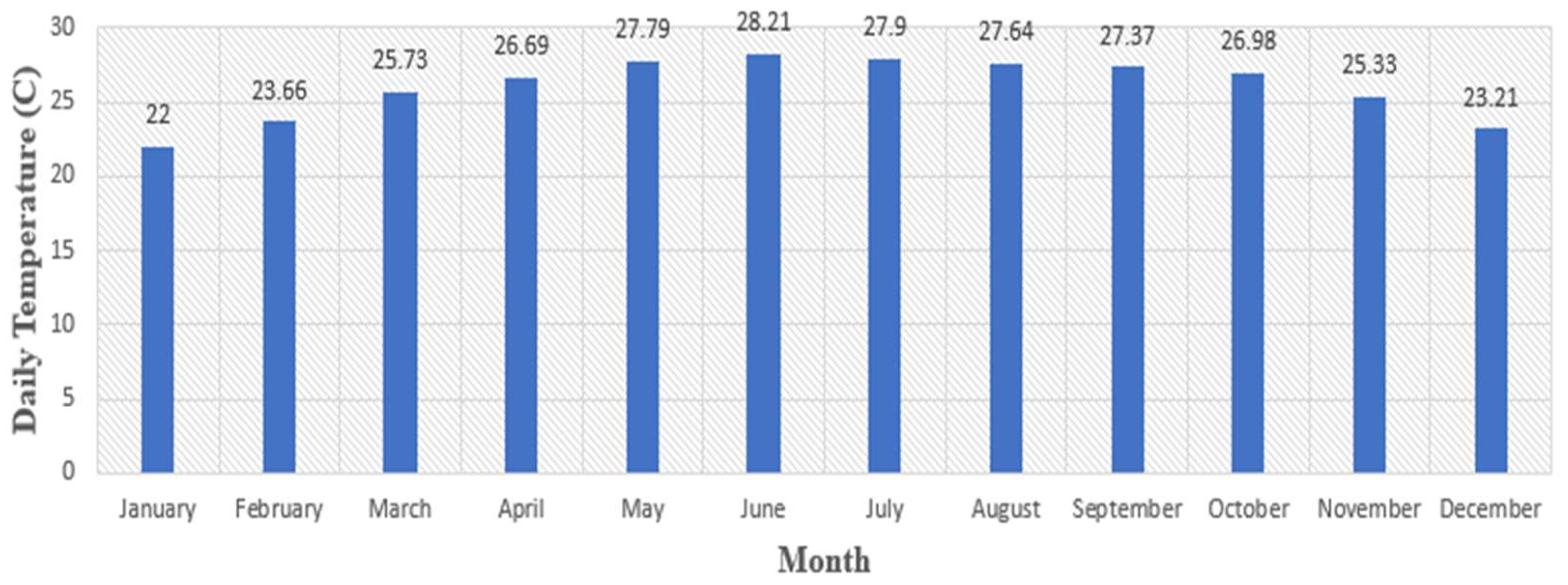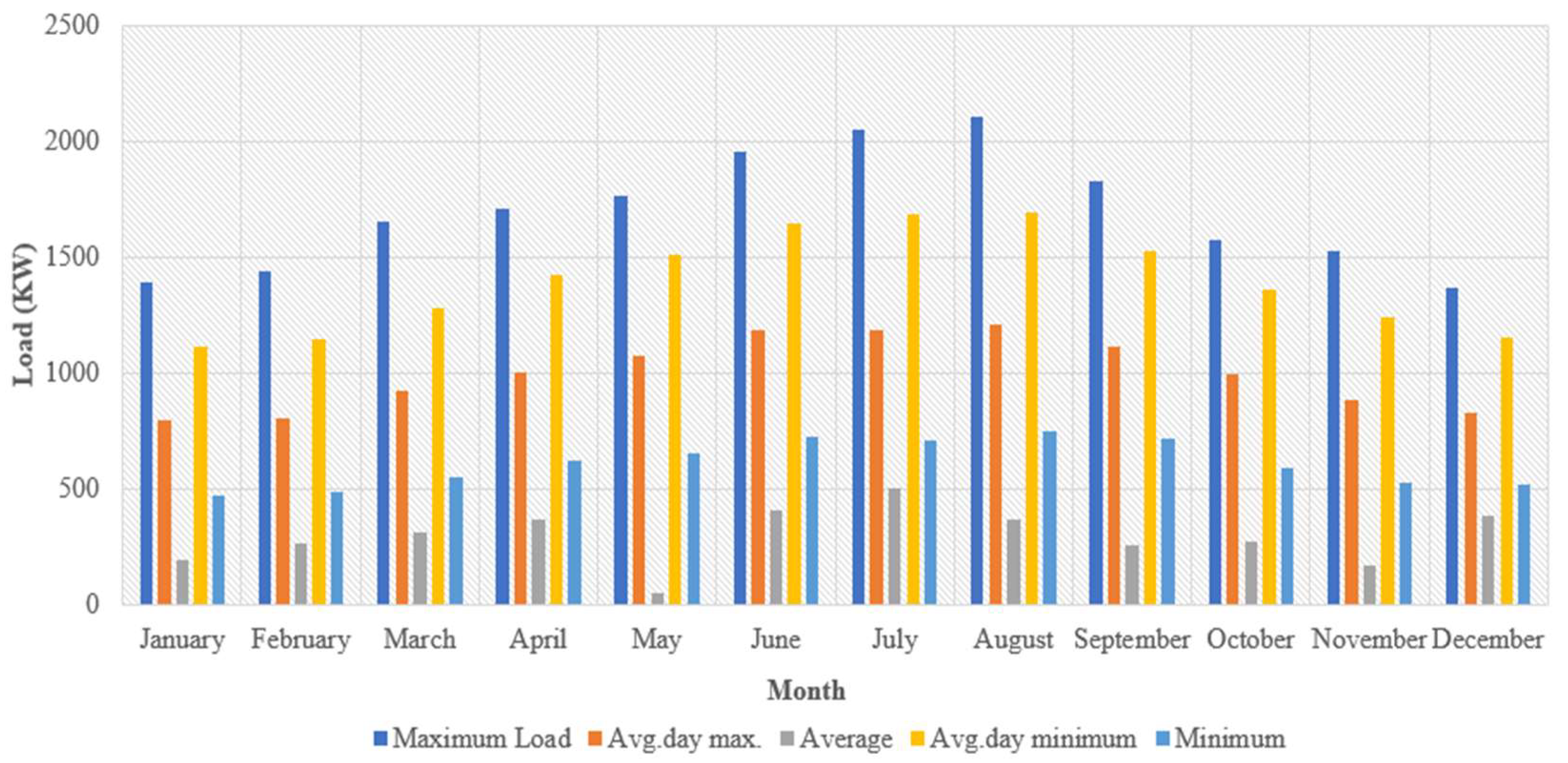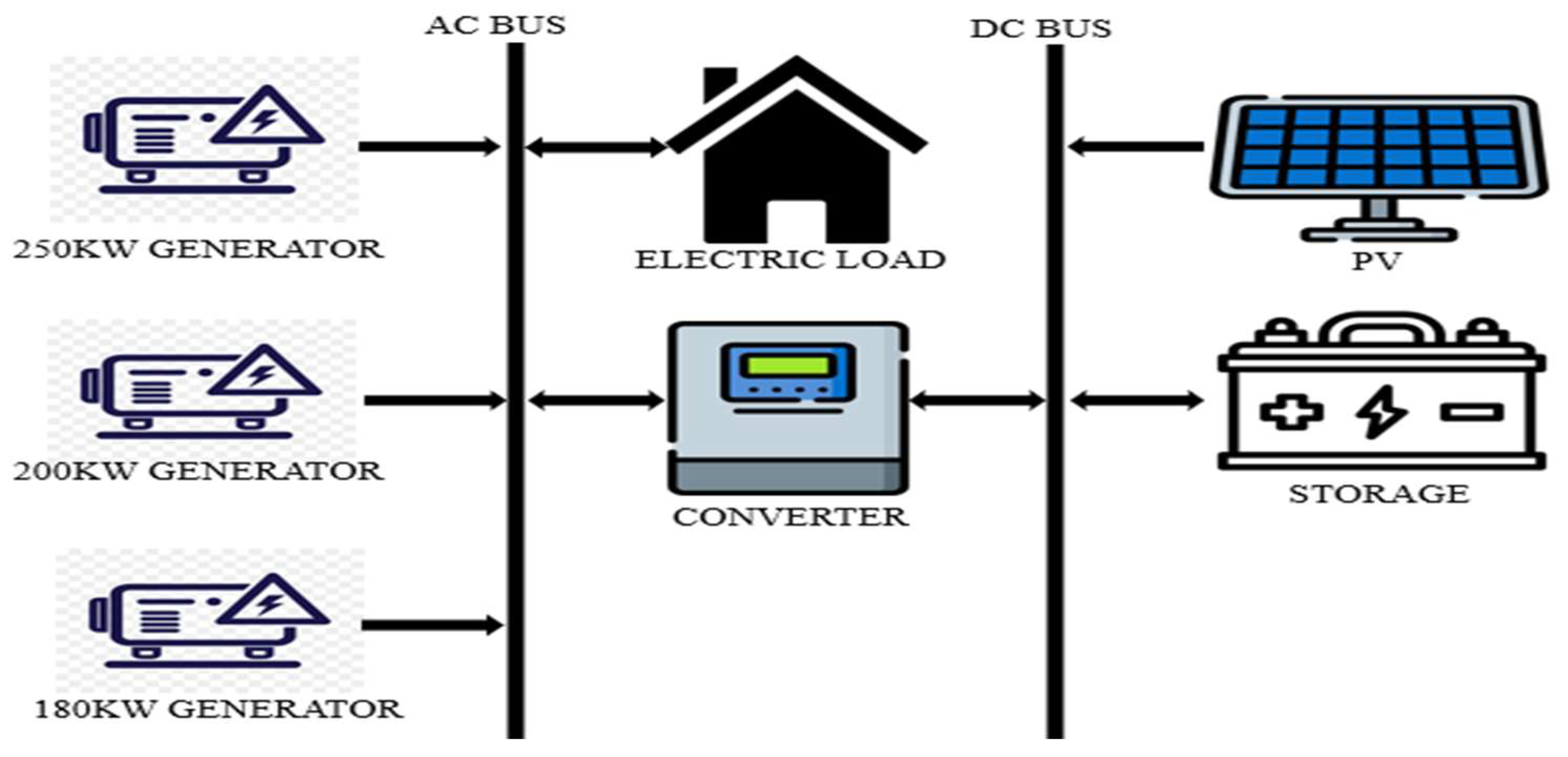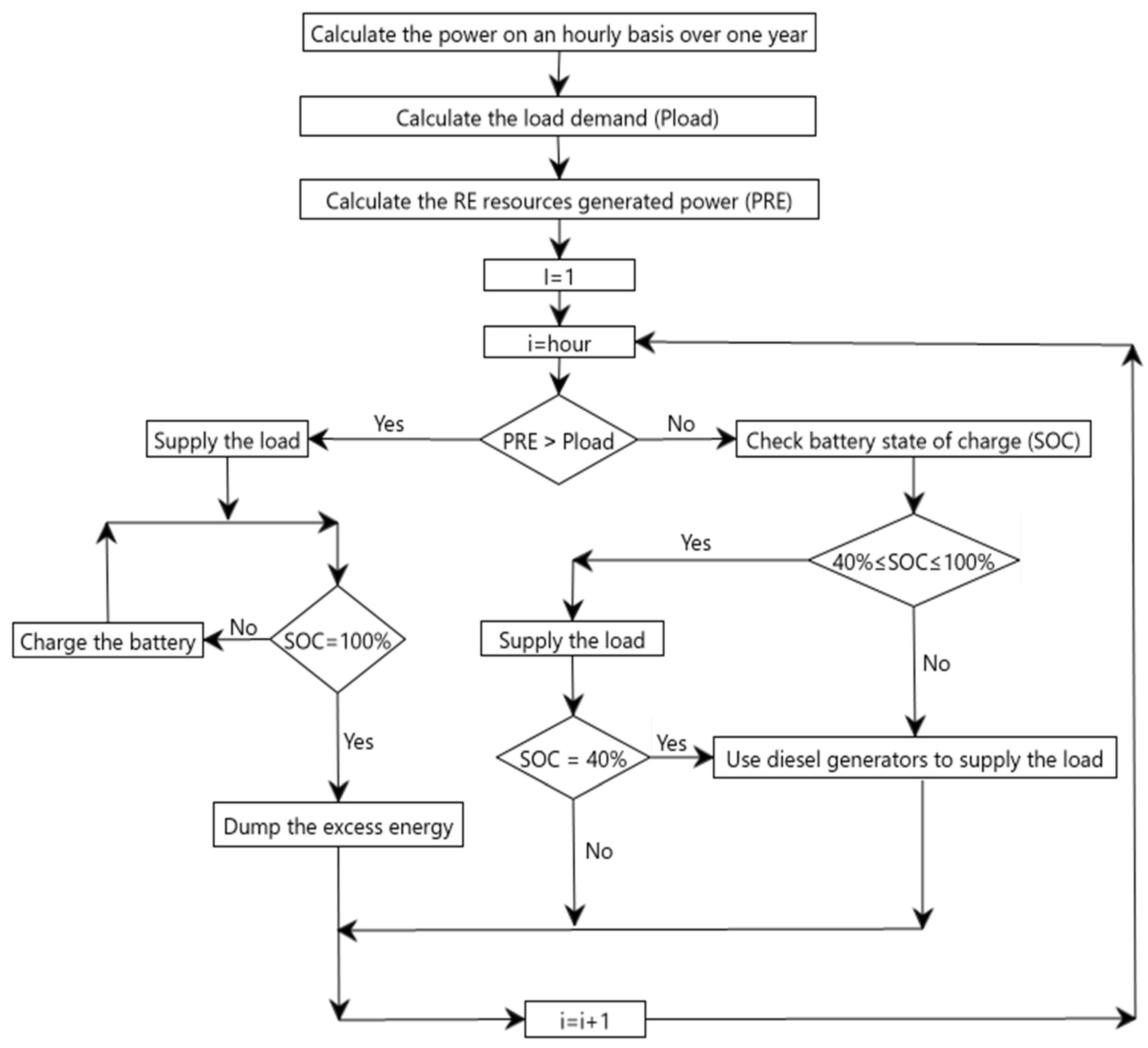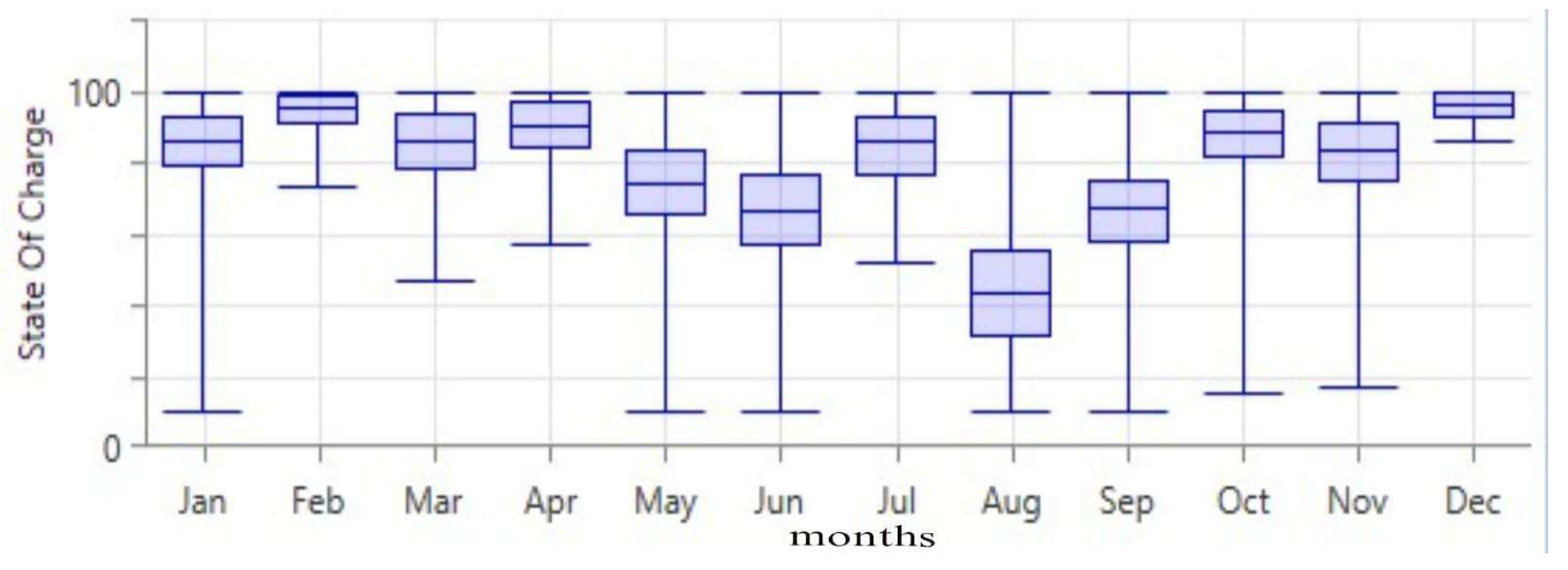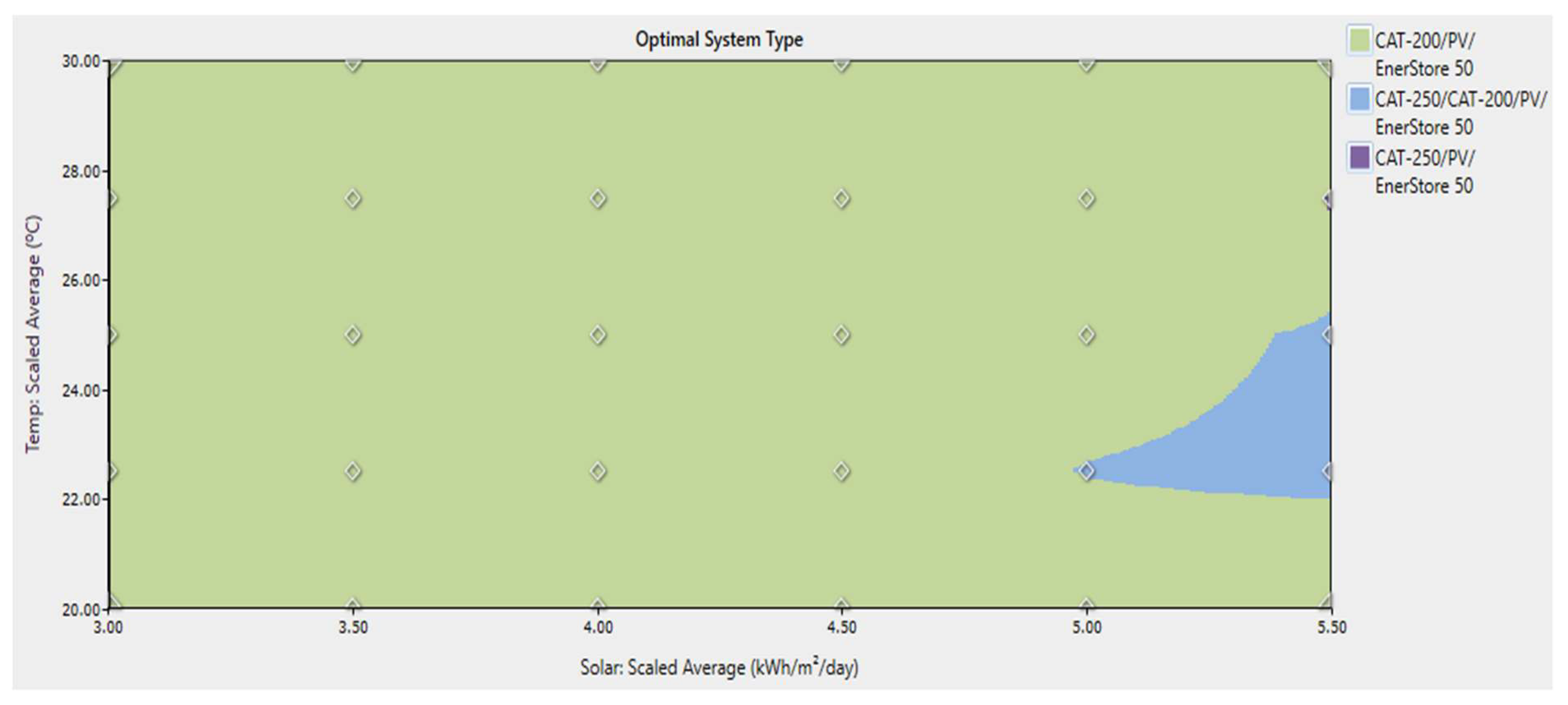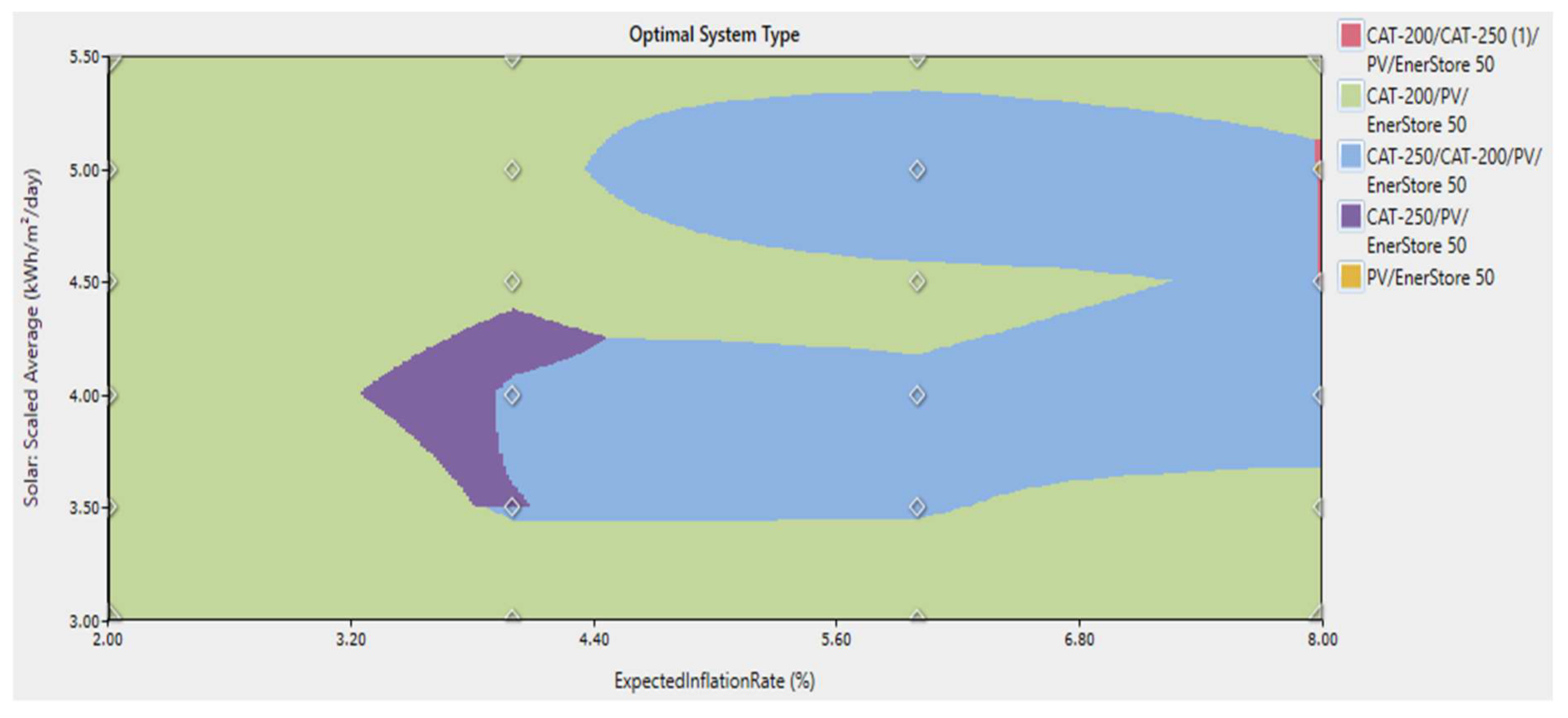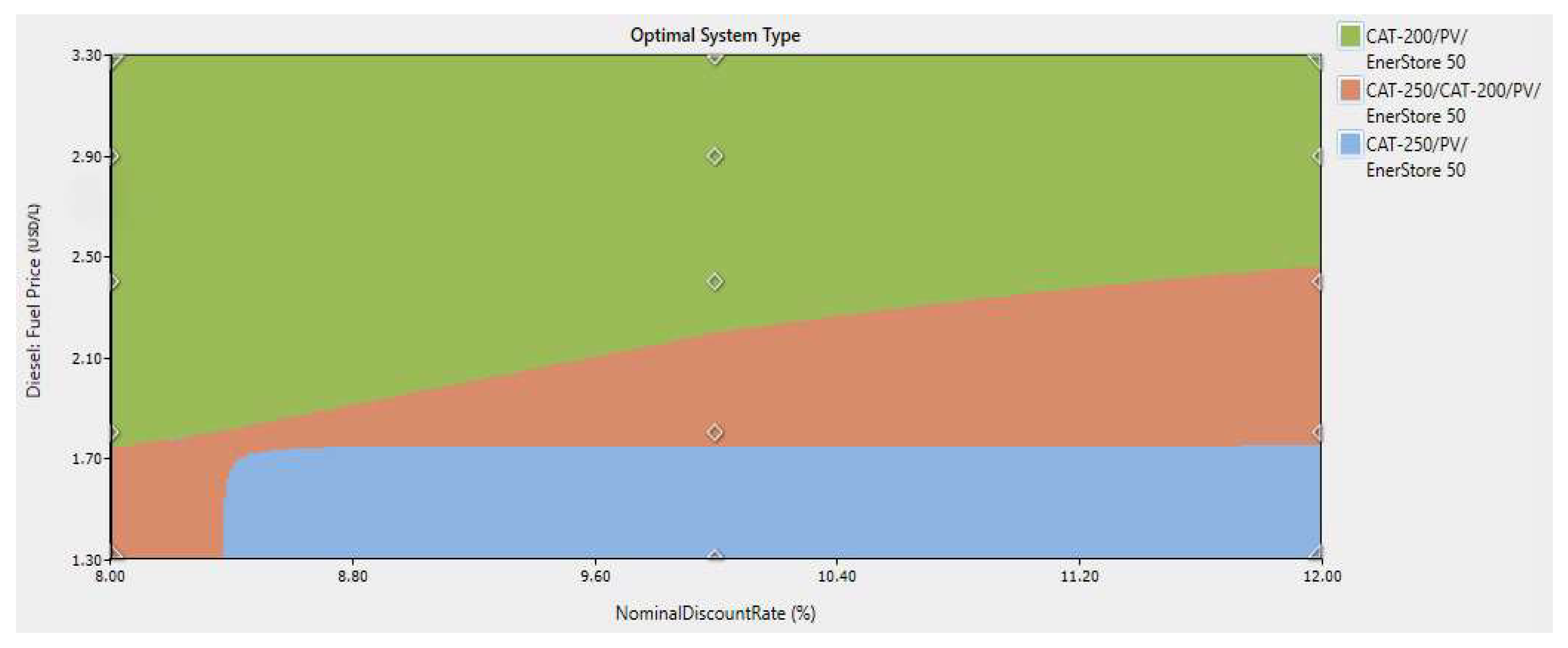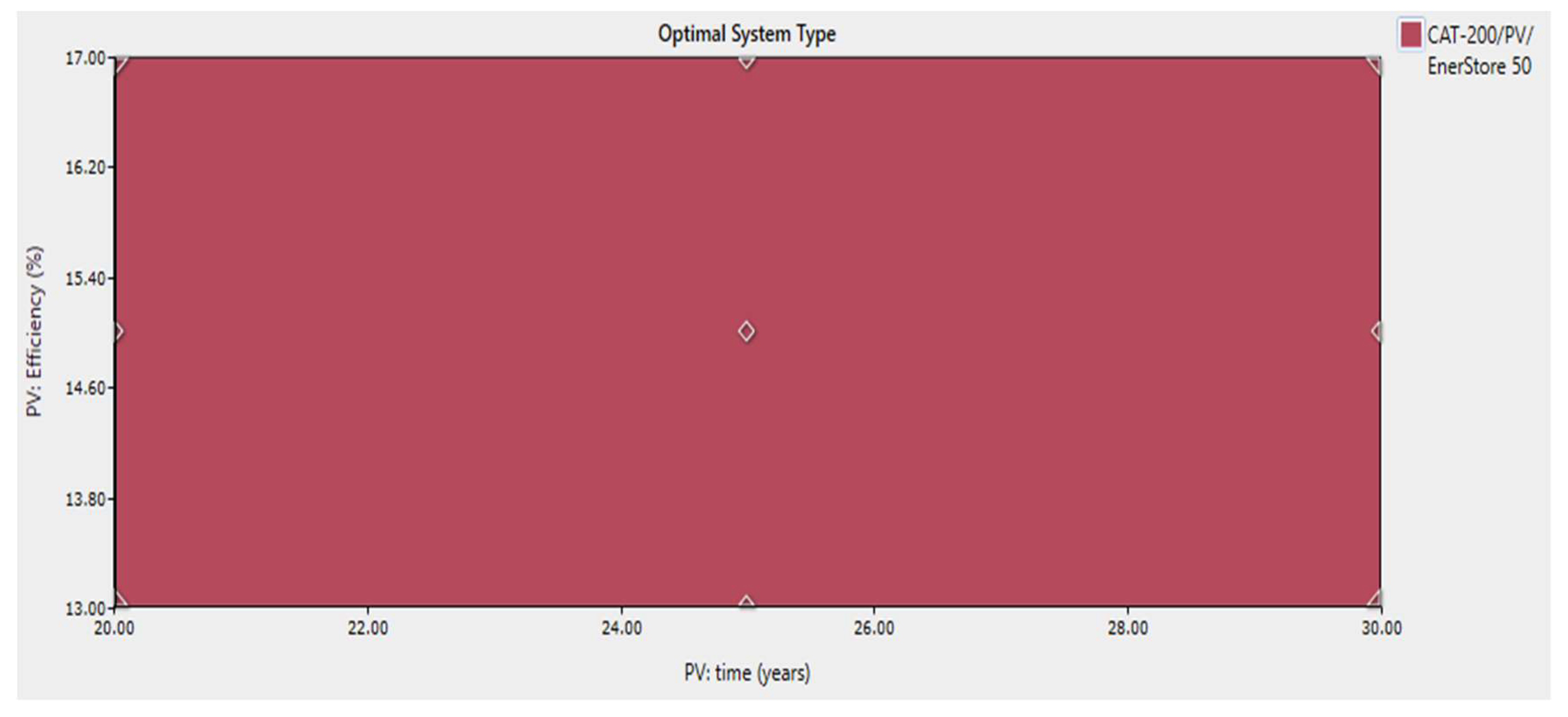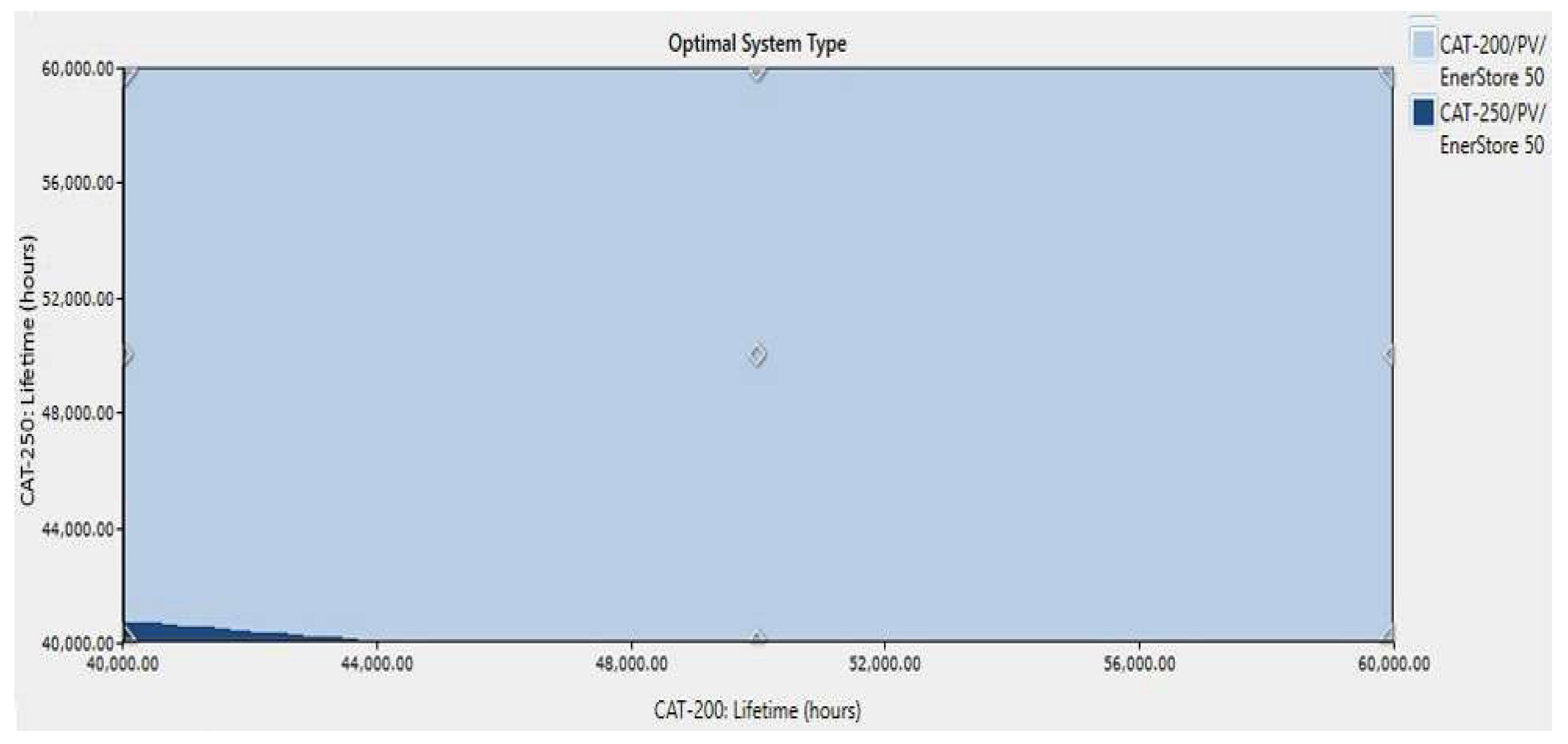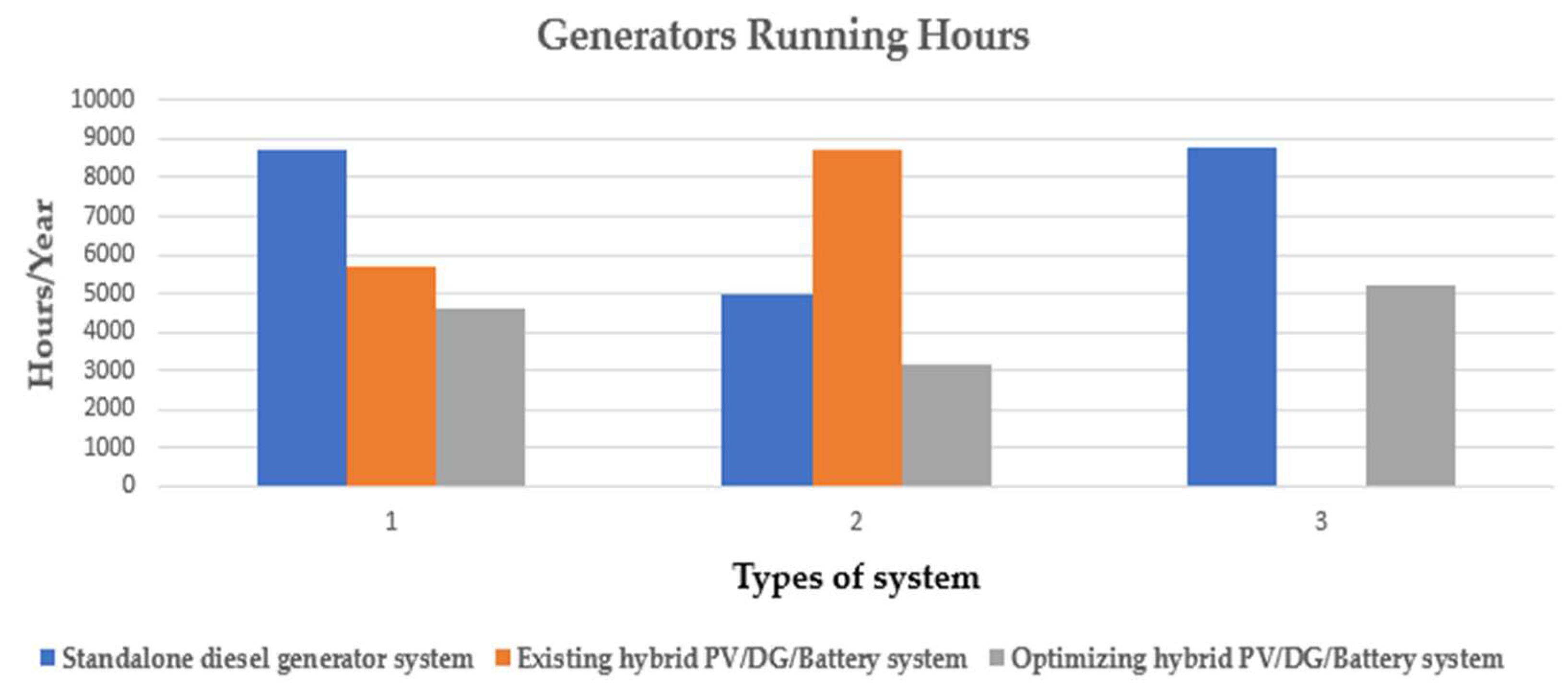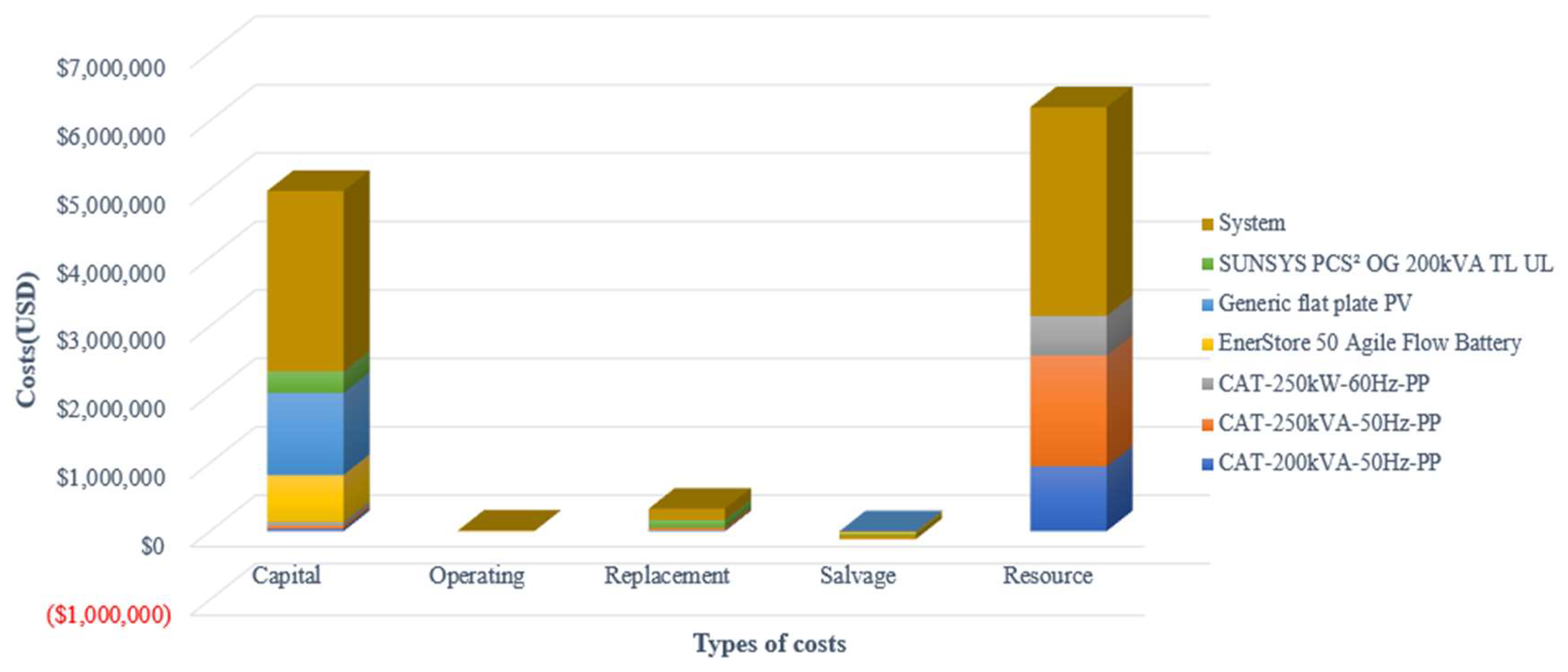1. Introduction
Solar energy has the most varied uses in the production of electricity of all possible renewable energy (RE) technologies employed in dispersed applications. When used in remote places, it offers dependable energy at a minimal cost [
1]. Additionally, it promotes local development through generating new employment and educational opportunities. Additionally, the environmental sensitivity of the product increased its usefulness [
2,
3]. For buildup nations, where a sizable portion of the population is spread out among several areas with no or limited access to energy, this technology has considerable potential. In such areas, RE sources are regarded as an appropriate rural electrification solution [
4]. Energy provision may be significantly impacted by this kind of energy generation. There is a significant connection between national energy consumption and the gross domestic product (GDP) in regions where access to electrical energy has a positive impact on the human development index (HDI). This is because electricity is essential for a society’s progress in the areas of economic, educational, and health development [
5]. For instance, in Bangladesh, where the poverty rate is 77.12%, a significant section of the population primarily resides in distant areas of Kuakata [
6]. Bangladesh has a good solar energy potential thanks to the high levels of solar radiation, which is an average of 4.36 kWh/m
2/day. As a result, Bangladesh has long seen solar energy as a practical solution for obtaining sustainable green energy [
7,
8]. Bangladesh is home to many isolated regions that are cut off from the primary grid and encircled by rocky terrain and thick jungle. An extension of the grid through these periphery areas is not currently thought to be possible or cost effective. These places frequently have electricity provided by standalone diesel generators (DGs). A study that looked at the advantages of integrated RE systems in several rural Bangladeshi areas revealed a strong potential for RE (solar energy and small-scale hydropower sources) in the production of electricity [
9].
The long-term effects of climate change will be devastating for Bangladesh, especially because of rising sea levels and storm surges which cause flooding in coastal regions. The present heat waves and floods are signs of worsening climate conditions [
10]. The nation intends to take corrective action by reducing the emissions of greenhouse gases to 15% by 2030. However, there is much room for improvement in the switch to RE. Recent global energy crises may have accelerated the need for RE, which currently appears to be the only viable option [
11]. In Bangladesh, the amount of energy produced via renewable resources is relatively low. According to a World Bank report, only 1.2% of all electricity generated in 2015 was produced using RE, which was 11.4% in 1990. The most common RE sources in Bangladesh at the moment are hydroelectric power, biogas, solar, and wind energy [
12]. The only power plant in the nation that produces 230 MW of electrical energy is the Karnaphuli Hydro Power Station [
13]. Wind energy is mostly obtained in coastal areas where wind is dominant. Currently, 2.9 MW of tested wind energy-producing turbines are located in two regions of the nation: Feni and Kutubdia. Parky Beach is now developing an additional 50–200 MW of wind power. Furthermore, the nation is capable of building 30 GW of onshore and offshore wind energy. Additional RE sources exist in the nation; among them, biogas offers considerable promise and is mostly produced from municipal and animal waste as part of sustainable waste management [
14]. Another very promising source is solar energy. According to a recent Sustainable and Renewable Energy Development Authority (SREDA) estimation, the nation may produce 30 GW of solar energy by 2041 [
15]. As a result, the nation’s RE industry could be a potential energy sector. According to the World Bank, Bangladesh is among the top 20 economies in terms of GDP growth, which necessitates a rising energy consumption.
Figure 1 shows Bangladesh’s proportion of various RE sources. The nation’s primary energy sources as of now (2022) are natural gas, other fossil fuels, and biofuels. The Russia–Ukraine war has made the current shortage and inadequacy of fossil fuel energy resources worse, necessitating a search for cutting-edge and modern energy sources [
16].
Due to the uncertain nature of the RE supply, it is currently not viable to replace conventional DGs entirely in rural locations [
17,
18]. Systems that combine conventional and RE sources could be a good way to combine the best features of each [
19]. To get the intended results, however, a variety of social, institutional, and technical elements must be considered when developing a hybrid RE system; otherwise, the system will be unreliable and ineffective. Numerous studies have documented the best hybrid system configurations, including PV, DG, and wind battery systems [
20,
21]. In the meantime, PV systems have proven to be less expensive and more practical than wind turbines. Most research supports rural hybrid PV/DG systems to produce electricity. According to several studies, hybrid systems can be designed more efficiently by employing HOMER and a variety of other optimization software and algorithms, such as artificial neural networks (ANN), differential evolution (DE), and particle swarm optimization (PSO) [
22,
23].
A battery-powered, PV/DG hybrid power system study backup for a community in Saudi Arabia was presented by Rehman and Al-Hadhrami [
24]. Particularly when the price of fossil fuels increased, the suggested hybrid solution seemed to be very efficient and advantageous. In the study [
25], a novel method for evaluating the generation reliability of a hybrid mini-grid system (HMS) based on the best design outcome from the HOMER Pro (version 3.11) program is presented. The capacity outage probability table (COPT) was also used in this study to validate the accuracy of the HOMER software’s conclusions for the best system combination. A hybrid microgrid discussed in [
26], which comprises a PV power system and an energy storage unit, is meant to deliver electricity to a segment of the hospital complex. The major goal of the paper is to lower the total electricity costs, incorporate renewables into the system, and have a DG and battery backup for emergencies. In several studies, the potential and techno-economic viability of using various hybrid system configurations at far-off locations have also been assessed [
27,
28]. The study [
29] compares three hybrid systems that are made up of a DG, which can be used to power the village in the event that RE sources are not enough, solar photovoltaic (PV) system, wind turbine, and batteries. Using PV arrays, wind turbines (WTs), and battery storage (HPV/WT/BA), an optimized, stand-alone hybrid energy system is presented, with the goal of minimizing the total net present cost (NPC) while considering the likelihood of energy loss (LOEP) and the impact of interest rate (IR) changes [
30]. The primary objective of the optimization is to size the hybrid system’s components, such as the number of PV cells, WTs, batteries, and the amount of power that is delivered to the load by the inverter, while minimizing the TNPC and meeting the LOEP. Another study employed HOMER and MATLAB tools to assess the Saudi Arabian potential of a hybrid solar and wind energy system [
31]. According to the findings, PV systems provide more electricity for less money than comparable-sized wind turbines. In addition, they demonstrated that the price would increase if a more reliable system was needed. The fundamental goal of [
32] is to deliver a cost-effective solution by lowering the NPC in the optimized system design. The report also compared the two-system designs on the basis of two critical issues: cost and environmental impact. Chong Li et al. [
33] present the technical and economic viabilities of a hybrid wind/DG/battery power system using several types of batteries for a modest residential area. The paper’s optimization findings demonstrate the viability and dependability of the proposed hybrid energy system’s energy delivery to the workshop. In order to enhance the performance of the original IWO and BSA methods by integrating their benefits into one algorithm, Yahiaoui et al. [
34] introduced a hybrid optimization algorithm named IWO/BSA. An independent hybrid microgrid system’s best economic design has been achieved using the suggested method.
Considering the aforementioned literature, it is clear that the majority of the research has been conducted in this field with the goal of determining the ideal design and assessing and examining the possibility or the techno-economic viability for hybrid systems. These studies generally found that hybrid systems have greater levels of reliability and a lower LCOE than single-source electricity. Despite the significant priority attached to such a practical evaluation, earlier studies did not consider hybrid systems’ operational behaviors once they were developed and put into service. Furthermore, in the southern region of Bangladesh, there were no studies conducted to combine PV technology with a storage system as a substitute source of energy production. The current systems solely integrate DG and PV generators, which have higher NPC and LCOE values. When inclement weather strikes or the sun does not rise, the current system is unable to supply energy due to a shortage of storage (battery). Therefore, for the first time in this study, the PV/battery/DG hybrid system’s performance metrics at Kuakata, Bangladesh, are studied and analyzed. This study assessed the effectiveness of an off-grid, hybrid, solar PV/DG/storage system in Kuakata, Bangladesh, in terms of its capacity to satisfy the demand and other operational needs. Moreover, there are no studies conducted considering the real load demand collected from the location where the hybrid system will be installed. In this regard, an integrated demand–supply management approach has been implemented in this study. For identifying an optimal hybrid system, it is important to conduct a sensitivity analysis to check how the hybrid system performs with parameter (cost, fuel price, etc.) changes to investigate its long-term implications. Hence, a sensitivity analysis in HOMER Pro is conducted utilizing variable load demands, fuel costs, discount rates, solar irradiation, temperatures, lifetimes of PV and DG systems, efficiencies of PV systems, and inflation rates to evaluate the system’s resilience. In addition, it is also important to assess the reliability of any hybrid RE system to ensure both the utility and customer satisfaction. To the best of authors’ knowledge, to date, no studies have conducted the reliability analysis of any hybrid RE system in Bangladesh. Therefore, for the first time, the technologically affordable design and system reliability have been examined in the study for the Kuakata region. The contributions to the paper are as follows:
The assessment of the RE based off-grid hybrid system’s optimal capacity to meet Kuakata’s actual load demand;
The proper sizing of the off-grid, RE-based hybrid system’s components are determined to meet the actual demand of Kuakata;
A sensitivity analysis is conducted to investigate the influence of uncertainty in key factors for the best off-grid, RE-based hybrid system configuration, which is clearly a major problem for HRES design;
A reliability assessment of the off-grid, RE-based hybrid system is conducted to ensure the system’s long-term sustainability and to help the policymakers make policies.
The paper is structured as follows: The details of the paper’s design, including the sampling strategy, data collection, and analysis methods, are presented in
Section 2. The mathematical expressions of hybrid components are given in
Section 3. The operational strategies are covered in
Section 4, which also includes a flowchart of how the system operates. The performances of four different scenarios are briefly discussed in the Results (
Section 5), along with the comparative cost, sensitivity analysis, storage system, economy analysis, etc. The impacts of technological, economic, and environmental factors are illustrated in
Section 6. After that,
Section 7 presents a comparison summary with earlier research,
Section 8 illustrates the limitations of the study, and finally,
Section 9 describes the conclusion and future research proposal of the study.
6. Discussion on the Operational Analysis
The key findings are addressed and described in this section. The data are combined to demonstrate the relationships between various system elements as well as the impact of changing the primary system parameter on the system performance. An analysis of each scenario’s comparative costs and environmental impact was also a major focus of this study.
Four various possibilities were examined. These include existing hybrid PV/DG systems, freestanding DGs, 100% PV/battery systems, and best-case scenarios (PV/DG/battery system). Each example illustrates and exemplifies the impacts of PV power injection on the NPC, power penetration, LCOE, surplus energy, fuel usage, operating hours, and other features.
6.1. Techno-Economic Effects
In contrast to the 100% PV/storage system, which has the maximum cost, the findings collected revealed that the optimized hybrid PV/DG/storage system provides the project’s finest economic characteristics. On the basis of the whole cost of the system, the hybrid PV/DG/storage system has good technical and extremely good economic qualities.
Figure 14 shows the optimized cost summary. The solo DG system is more expensive in terms of the capital, replacement, fuel, operation and maintenance, and salvage expenses than the integrated PV/DG/storage system. A hybrid PV/DG system is less expensive than a 100% PV/battery system. The findings from both sites show that employing a 100% PV/storage would be expensive due to significant startup costs and storage replacement costs. However, it would be a workable approach if the costs of these components were reduced.
The currently installed PV systems were not chosen for their identical demand profiles, solar irradiation data, and temperature data prior to installation, as shown by contrasting them with the optimal possibilities. The creators of these initiatives desire to rely more on solar energy and storage than on DGs for the existing systems because of how remote both of these locations are. The ideal systems, where the share of RE in the total production is 46.5%, exhibit lower PV penetration levels. In addition, there are now just two strings of batteries at each site. This contrasts with the present hybrid systems’ RE sharing rate of 61.79%.
The total system performance was studied in the sensitivity analysis in relation to changes in key parameters like the fuel cost, load expansion, solar energy, and battery bank pricing. The findings indicate a greater trend toward the use of hybrid systems, particularly as fuel prices and load demands rise, which include solar panels, batteries, and DGs. Additionally, lowering the cost of the PV system and storage would encourage the usage of PV arrays and batteries, because such systems would have a lower NPC and LCOE.
The stability of the system depends heavily on the storage system. The storage system provides a good way to reduce extra energy. Thus, the best possible use of this energy for the existing design is discovered. The level of charge of the storage system shows that both systems have frequent charging cycles. However, the 100% PV/storage system has more cycles, because it primarily relies on the batteries to power loads when the PV is not available. The hybrid system is also compared to freestanding DGs to assess the consequences of deploying similar systems on fuel usage, generator running hours, hazardous emissions, and economic difficulties.
According to the findings, integrated systems may use less fuel and emit significantly reduced amounts of harmful environmental emissions. Due to the system’s increased use of smaller generators to power the loads throughout the day, the DGs’ operating hours would also be reduced. Since the generators are operating at reduced loads, there is a decrease in the overall NPC and LCOE as well as the costs associated with their replacement, maintenance, operation, and fuel.
6.2. Impact on the Environment
The findings indicate that freestanding DGs contribute the highest rate of hazardous emissions into the environment, in comparison to a system that uses just solar energy and batteries. The hybrid PV/DG/storage system, on the other hand, exhibits excellent economic and environmental characteristics. The system’s harmful emissions would decrease as the amount of energy produced by RE sources increased. It is also obvious that the structure of the system and the volume of energy produced affect the decrease in hazardous emissions.
9. Conclusions and Future Research Proposals
This study investigates the techno-economic and sensitivity analysis of a hybrid power system, as well as multiple performance matrix scenarios for a station in Kuakata. According to the study, a site with a significant annual average global solar radiation (5.00 kWh/m2 per day) and yearly average temperature (25.11 °C) is a feasible location for the installation of a PV/DG/battery hybrid system. According to the HOMER simulation findings, the most economically feasible solution for the site load consists of a 200 kW PV array, 250 kW, 200 KW, and 160 KW DG, and six units of batteries, each with a nominal voltage of 100 V and a capacity of 500 Ah. The simulation’s results indicate that the ideal system would produce 3000 kWh of energy per day, with an operating cost (OC) of USD 3967.32, an LCOE of 0.367 USD/kWh, and an NPC of USD 5.19 M. It also demonstrates the effects of adding PV power to mini-grids at various RE penetration levels (0%, 36.75%, 42.87%, 61.43%, 78.8%, and 100%) based on significant operational methods.
This research examines PV system sizes, demand profiles, temperatures, radiation, hazardous emissions, and RE penetration impacts on the LCOE, NPC, and technical qualities, highlighting its socioeconomic benefits. According to capacity-based measurements, the RE penetration is 51.9% and greenhouse gas emissions are 0.27 Mkg/yr. Furthermore, the study analyzed system expenses, revealing that the standard, standalone DG design is financially unfeasible due to high diesel prices, impacting the operational costs, and results in negative environmental impacts. The sensitivity analysis reveals that when 22.52 °C is the ideal temperature and 5 kWh/m2/day of sun radiation, a nominal discount rate of 10%, a 25-year PV array lifespan, a price of 1.8 USD/L for diesel fuel, and an average load of 4800 KWh/d are all present, the system operates best. The findings also indicate that anticipating the energy sources and load profiles is particularly helpful for developing a more efficient, cost-effective, and environmentally friendly management plan. This work can serve as a model for policymakers to make policies in hybrid RE systems, which may be followed by other researchers or operators or RE-based enterprises while developing similar systems.
Future research on RE in Bangladesh is crucial, focusing on environmental trust fund utilization, climate change awareness, resource planning, natural disaster mitigation, load demand satisfaction, remote energy supply, and optimal power plant performance. Tidal energy is one more sustainable energy source that has to be considered. A future research proposal could be integrating tidal energy to replace the DGs, making the optimized system more efficient. This could be beneficial for the environment in addition to being economically advantageous.
